How to Increase Amazon Sales: 13 Strategies to Earn More from Bezos
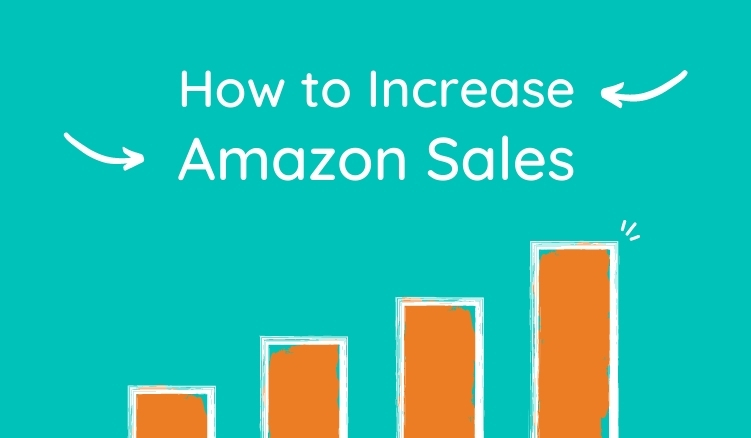
Keep the good stuff coming
Subscribe to our blog newsletter and get monthly content that helps you manage product data smarter.
No spam. Just real value.
For any Amazon seller, more revenue is always the goal. And boosting your bottom line starts with figuring out one thing: How to increase Amazon sales.
Simple equation, right? More sales = more revenue.
But do you know how to boost product sales on Amazon?
There are tons of ways to increase traffic to Amazon listings and get more people to choose your products before they hit the “Buy Now” button. If you need Amazon sales help, look no further. We’ve compiled 13 of the best strategies people are using to get more Amazon sales and earn more bucks from Bezos.
Discount, Discount, Discount
You know when you’re on the fence about making a purchase, but then you find out the item you’ve been hemming and hawing about is on sale? That makes the choice to pull the trigger so much easier. And that’s why discounts are a huge tool to use to boost your Amazon sales.
There are a few different options for this. Of course, you can always use Amazon’s promotions category to temporarily mark down the prices for some of your items. This makes you more competitive within your category on Amazon, and may encourage more shoppers to choose your items over a competitor’s.
You can also use other sites, including Amazon affiliate sites like Hip2Save or The Wirecutter, to offer discount codes on your products. This has the added advantage of sending more traffic to your Amazon listings, which can cause Amazon to rank your products higher in search results.
Find out more about how to structure your pricing strategy here!
Get Those Good Reviews
According to a survey by Podium, 60 percent of consumers look at online reviews at least once per week, and a whopping 93 percent say reviews influence their purchasing decisions. With numbers like those, it’s hard to underestimate the power of a positive product review.
There are a few keys to making sure customers leave good reviews:
- First, sell a quality product. This one speaks for itself.
- Second, make sure your buyers are never surprised. The product they receive should be exactly what they expect based on what’s described on your product page. The more detail you provide, the better, and make sure everything is accurate.
- Last, provide a good customer experience. Have processes in place to provide the kind of customer service that will delight your guests. If anything goes wrong, fix it, promptly and happily.
Once you know your customers will leave positive reviews, the next challenge is to get them to actually leave one. There are tons of software options available that you can use to automate sending an email to your buyers asking them to leave a review, so they get prompted to leave their feedback without you having to manually send tons of follow-up emails.
Protect Yourself From Bad Reviews
Good reviews will help sell your products, but bad reviews will leave shoppers scrolling right on by until they find a more popular competitor. Avoiding bad reviews will go a long way toward boosting your product sales.
If you do get bad reviews, pay attention to them. They may be able to help you make changes to avoid making the same mistakes in the future. Look out for reviews that mention anything about how the product doesn’t match its description, shipping problems, or unresponsive customer service; and then address those things immediately.
Another way to protect yourself from bad reviews is by asking for seller reviews rather than product reviews. Then, you can manually reach out to the customers who leave you positive seller reviews to ask them to leave a product review, as well. This takes more time and effort on your end, but if it helps you get only positive reviews for your products, it’s well worth the extra time investment.
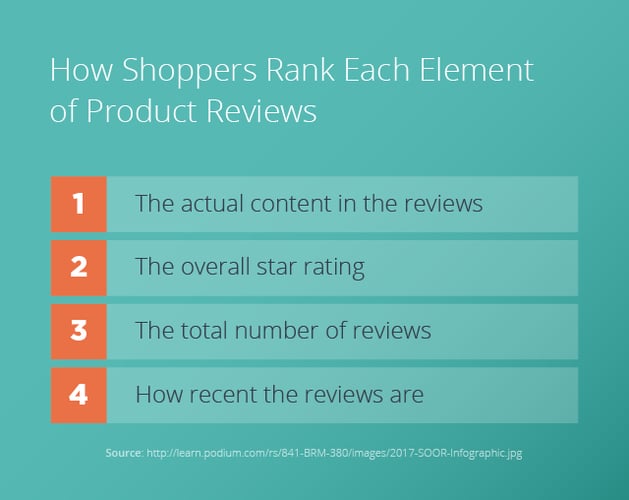
Highlight Features That Are Selling Points...And Explain Why
When writing your product description, it can be easy to either write too much or too little. The next few strategies will help you nail the product description so potential buyers have the information they want and need, without being overwhelmed by a wall of text.
It all starts with choosing 2 to 3 of your product’s best features and listing them as bulleted highlights in the product description.
But don’t just point out your product’s best features. List them along with the benefits that they provide to someone who purchases your item. Tell your potential customers what they stand to gain if they choose your product.
Use Every Available Section of Your Product Page
While only the best selling points should be in the main part of your product description, Amazon provides other sections that will allow you to include more detail that your customers can access if they want it. Make use of all the space Amazon provides. This is your opportunity to get into the finer details of your product, and those details could be what prompts a customer to choose your product over a competitor’s similar product that they know less about.
Keep Product Listings Short and Simple
Ecommerce is a pretty fast-paced experience that definitely feeds our need for instant gratification (free two-day shipping, anyone?). That means that no buyer is going to be interested in a product description page that reads like a novel.
There’s a delicate balance to strike here—this might seem like it contradicts the last two strategies, which were about details you should include that will let your customers know what to expect when they order your product. It’s important to include a lot of details. But buyers need to be able to skim your listing and get all those details quickly.
A few tips for writing product descriptions that get your message across without being too lengthy:
- Keep sentences short and to the point.
- Avoid technical language, and write in a way that anyone will understand.
- Use bullet points to highlight your product’s features in a skimmable way.
- Think about the information that will compel viewers to buy your product, and focus on that first.
It’s also important to remember that not everyone is a natural writer. If writing isn’t your strong suit, it might be a good idea to hire a copywriter who specializes in product descriptions.
Add Relevant Keywords to Your Listings
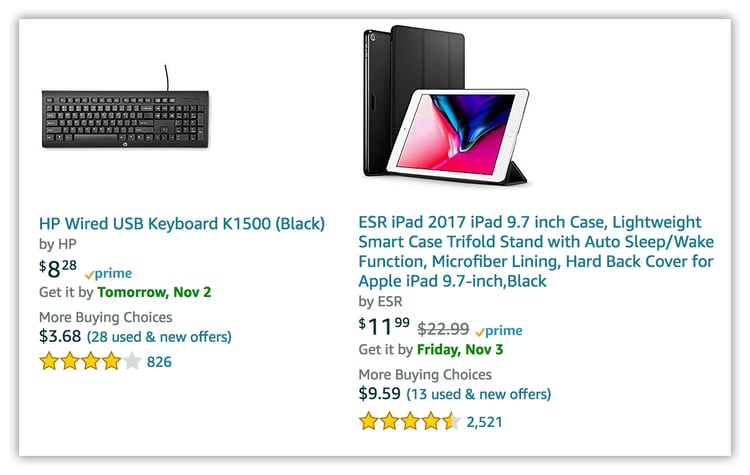
Source: Amazon.com
Amazon’s search operates similar to a search engine like Google. That means knowing how to improve SEO on Amazon can drive more traffic to your listings.
Take a look at the example above:
The keyboard on the left has a simple, straightforward title without a lot of keywords—it might come up in a search for “black keyboard,” “USB keyboard,” or “wired keyboard.” The listing on the right, however, is packed with keywords—”iPad case,” “trifold case,” “iPad 2017 case,” “iPad smart case,” “iPad 9.7 case,” etc.—that will ensure that listing comes up in a lot of different searches.
Adding relevant keywords and making Amazon product titles long and descriptive is a great way to help shoppers find them in searches. Use an online tool like Google Keyword Planner or Merchant Words to find primary and secondary keywords that will help boost your listings.
Offer a Bonus Product
One great way to convince shoppers to choose your product over a competitor’s is to offer a bonus product along with their purchase. The key here is to find a product that has a high perceived value to your customers, but doesn’t cost you much to include. That way, giving out freebies won’t hurt your bottom line.

Source: Amazon.com
For example, the above package of instant-developing film comes with a free lens-cleaning cloth. If this package is comparable in price to other value packs of film (it is), then the free bonus might be enough to convince a shopper to choose this listing over many similarly priced competitors. And while a microfiber cloth is useful for a camera owner and thus has perceived value, it costs pennies to produce, meaning it isn’t hurting the seller to throw it in as a bonus for purchasers.
Take Advantage of Images
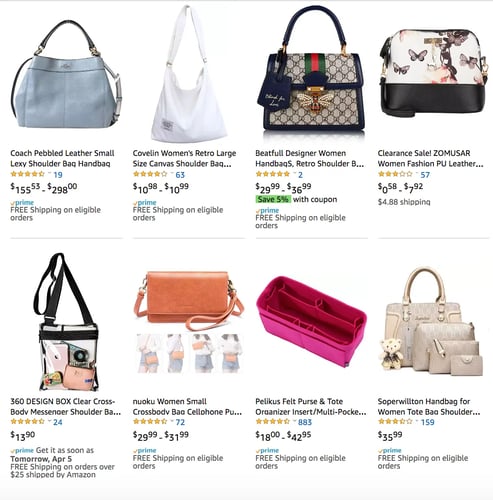
Source: Amazon.com
An Amazon search for handbags shows a sea of results that are cropped photos of bags on white backgrounds. That’s why, in the example of search results above, the bag on the bottom row that also shows some photos of the different ways it can be worn immediately catches the eye and stands out.
Keep this in mind when choosing photos for your listing. Having a featured product photo that stands out on the search results page can get more people to click through. Once they’re in your listing, you can hook them with more photos from different angles and close-ups of special features.
Also, make sure to use the maximum number of photos for your listing. One disadvantage to online selling over in-store sales is that shoppers can’t physically examine your products, which can help convert more sales. If they can see all the details of your product from multiple photos, it’s as close as an online seller can get to letting them see the product before they buy it.
A/B Test Images, Headlines, and Product Descriptions
Once you’ve implemented all the strategies above, you can continue to refine your images, headlines, and product descriptions by A/B testing them. Online tools can help you do this.
One of our favorites is Splitly, an Amazon split-testing tool that will automatically rotate headlines and images and track your conversion rates, sales, rankings, and organic traffic so you’re left with a very clear picture of what information and images give you the best results.
Run a “Type In Search” Contest
When Amazon is ranking search results, it looks at what products generate the most sales for specific keywords.
For example, say you search Amazon for “portable bluetooth speaker.” While you’re going to get pages and pages of results, the results at the top of the first page will be the products people tend to buy when they search for that phrase.
So here’s how a “type in search” contest works: You tell your customers to go to Amazon and type in a specific search term then purchase your item from the results page. (Note that this is different from giving them a link to your product page—they have to enter the search term for this to work.) You then offer them the chance to win a prize once they show you proof of their purchase. That way, your products move up in Amazon’s rankings for the phrase you chose.
Advertise on Facebook
For a long time, there was no built-in way to track Amazon conversions that came from Facebook ads. While that has changed, there still aren’t too many Amazon sellers taking advantage of the huge opportunity Facebook presents to drive traffic to your products.
If you haven’t set up a Facebook campaign before, it’s not too tough to figure out.
Switch Sponsored Listings from Automatic to Manual
Sponsoring listings on Amazon can be pretty complicated, but there’s an easy way to do it that lets Amazon do most of the heavy lifting for you.
In Seller Central, go to Advertising then Campaign Manager and create a new campaign. When prompted, choose automatic targeting, not manual.
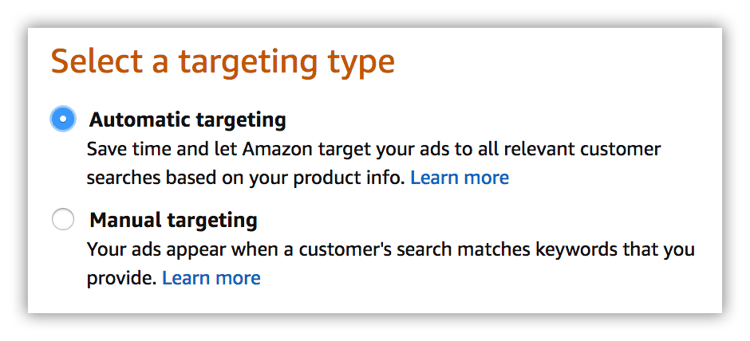
Source: Amazon.com
That way, Amazon will automatically put together a list of keywords it thinks will be relevant to your sponsored ad. You can then run a report to see which keywords converted best and create manual targeted ads based on those high-performing keywords.
No matter which Amazon seller tips you choose to put into practice to drive more traffic and sales from your Amazon listings, you need to be able to centralize, optimize, distribute, and analyze scattered product information so you can keep all your listings accurate and generating as much revenue as possible.
Now go forth and use your newfound knowledge about how to increase Amazon sales. Your bottom line will thank you for it.

What if your product data actually worked for you?
We’ll show you how Plytix helps you stop fixing data—and start using it.
Related posts
Keep the good stuff coming
Subscribe to our blog newsletter and get monthly content that helps you manage product data smarter.
No spam. Just real value.





Think others should see this?
Go ahead and share it.